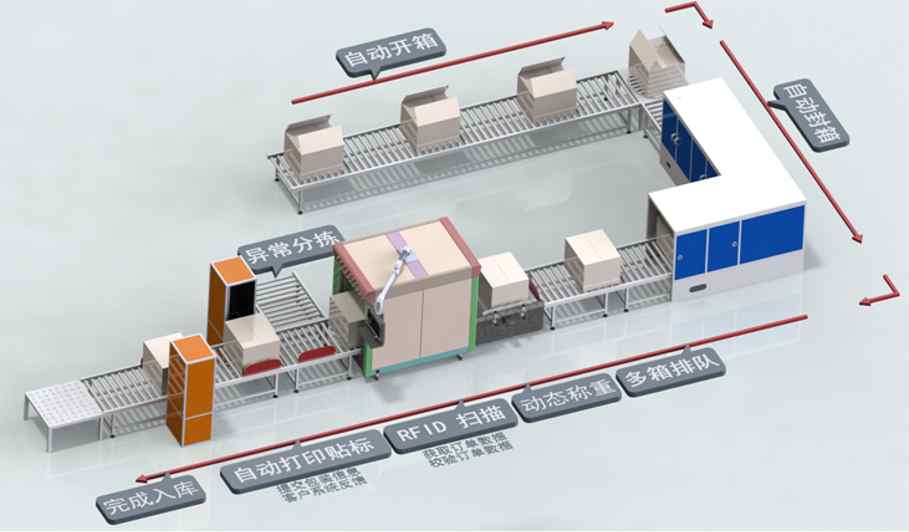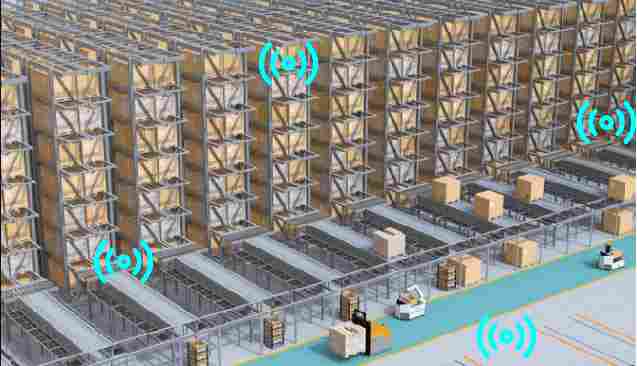What is the architecture of an IoT EPC?
RFID systems are indispensable!
With the acceleration of global economic integration and information networking, in order to meet the identification and efficient identification of a single item, the Massachusetts Institute of Technology (MIT) Automatic Identification (Auto-ID) Laboratory, with the support of the Uniform Code Council (UCC) in the United States, proposed to use RFID and wireless communication technology on the basis of the computer Internet to construct a system covering all things in the world, and also proposed the electronic product code (EPC). The concept of ).

In other words, each object is assigned a unique EPC and is managed and interconnected by an RFID-enabled information system: data transmission and data storage are handled by the EPC network.
Subsequently, the European Article Number Association (EAN) and the Unified Code Association (UCC) jointly established the non-profit organization EPC Global in September 2003, which incorporated EPC into the global unified identification system, realizing the perfect combination of the GTIN (Global Trade Item Number) coding system in the global unified identification system and the EPC concept.
EPC Global's description of the Internet of Things is that an Internet of Things is mainly composed of three parts: EPC coding system, RFID system and EPC information network system.
1. EPC coding system
The Internet of Things enables the real-time sharing of global item information. Obviously, the first thing to do is to achieve a unified code of global items, that is, to label any product produced anywhere on the planet with an electronic label. This electronic tag carries an electronic product code, which is unique in the world. The electronic tag represents the basic identification information of the item, such as "the E-piece of the Class D product produced by Company A at time B at location C". At present, the EPC code supported by Europe and the United States and the UID code supported by Japan are two common electronic product coding systems.
2. RFID system
The RFID system includes EPC tags and readers. The EPC label is the carrier of the number (the unique number of each commodity, i.e., the license plate), and when the EPC label is attached to or embedded in the article, the item establishes a one-to-one mapping relationship with the product electronic code in the EPC label.
The EPC tag is essentially an electronic tag, and the memory information in the EPC tag can be read through the RFID reader. This memory information is usually the electronic code of the product, which is reported to the IoT middleware by the reader, and then stored in a distributed database after processing.
Users can query the information of goods in the address bar of the supply chain web browser, enter the name of the item, the manufacturer and the supplier and other data, and then you can know the status of the item in the supply chain in real time. At present, standards related to this part have also been formulated, including the standard for the encapsulation of electronic tags and the standard for data interaction between electronic labels and readers.
3. EPC information network system
The EPC information network system consists of three parts: EPC middleware, EPC information discovery service and EPC information service (EPCIS).
1) EPC middleware
In order to standardize and communicate between each small application environment or system, a common platform and interface must be set up between the background application system and the reader, often referred to as middleware. EPC middleware is used to realize the information exchange between the RFID reader and the background application system, capture real-time information and events, or go up to the background application database system and ERP system, or go down to the RFID reader.
EPC middleware uses standard protocols and interfaces, which are the link between RFID readers and information systems. Currently, an Application-Level Event (ALE) standard is already being developed.
2) EPC information discovery service
EPC Information Discovery Service (EPC) includes ONS and supporting services, which is based on EPC to obtain EPC data access channel information. At present, the root ONS system and the supporting discovery service system are operated and maintained by Verisign entrusted by EPC Global, and its on-port standards are being formed.
3) EPC information services
The software support system of the EPC system in the EPC Information Service (EPCIS) is used to enable the exchange of EPC information by end users in the Internet of Things environment. Once the EPCIS standard is recognized, it is very likely to bring a great impetus to the development of the RFID industry, thus providing a standard way to capture and share the information collected by the wireless frequency word recognition chip.
The EPC IoT architecture is mainly composed of EPC coding, EPC tags and RFID readers, the same part system, the ONS server and the EPCIS server.
The basic architecture of an enterprise Internet of Things application system consists of three parts: RFID identification system, middleware system and computer Internet system. Among them, the RFID identification system consists of an EPC tag and an RFID reader, both of which communicate through the RFID air interface: the EPC tag is attached to each item. The middleware system includes EPCIS, PML and ONS and its caching system, and its back-end application database system also includes ERP system. The middleware system is connected to the computer Internet, which can track, query, modify or add or remove data in a timely and effective manner.
To sum up, the EPC system is based on the computer Internet, through EPC middleware, ONS and EPCIS to realize the global Internet of things.
-
 What does the IoT EPC consist?What is the architecture of an IoT EPC? RFID systems are indispensable! With the acceleration of global economic integration and information networking, in order to meet the identific
What does the IoT EPC consist?What is the architecture of an IoT EPC? RFID systems are indispensable! With the acceleration of global economic integration and information networking, in order to meet the identific -
 Industrial identification RFIDIndustrial identification RFID: industrial RFID example explanation China is a big industrial country, and industrial manufacturing is gradually moving towards intelligent manufacturing, creati
Industrial identification RFIDIndustrial identification RFID: industrial RFID example explanation China is a big industrial country, and industrial manufacturing is gradually moving towards intelligent manufacturing, creati -
 Discussion on RFID Testing Technology of Radio Frequency IdentificationDiscussion on RFID testing technologyWith the reduction of the price of readers and tags and the expansion of the global market, the application of radio frequency identification RFID (hereinafter ref
Discussion on RFID Testing Technology of Radio Frequency IdentificationDiscussion on RFID testing technologyWith the reduction of the price of readers and tags and the expansion of the global market, the application of radio frequency identification RFID (hereinafter ref -
 Lora Network Technology BriefWhat is LoRa and LoRaWAN LoRa is a physical layer or wireless modulation to create a long-distance communication connection, LoRa technology based on CSS modulation technology (Chirp Spread Spe
Lora Network Technology BriefWhat is LoRa and LoRaWAN LoRa is a physical layer or wireless modulation to create a long-distance communication connection, LoRa technology based on CSS modulation technology (Chirp Spread Spe










